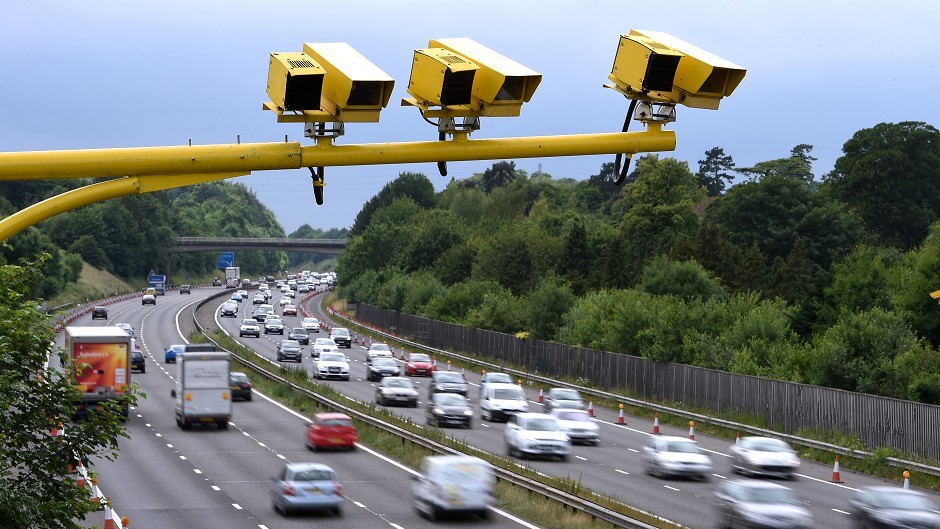More than 5,000 motorists have been caught out by average speed cameras on the north-east’s busiest road in the last year.
Transport Scotland officially switched on the new, permanent average speed cameras on the southern stretch of the A90 Aberdeen to Dundee road yesterday – and insist they will improve road safety.
Work on the £2million project to install the 30 devices on the 50-mile stretch between Stonehaven and Dundee began earlier this year.
Similar speed cameras are already in place along stretches of the A9, and the Scottish Government says they have already helped reduce the number of deaths and serious casualities by more than a third.
But today, the Press and Journal can reveal that motorists are still ignoring the temporary cameras already in place at Stonehaven, Charleston and the northern stretch of the A90, between Balmedie and Blackdog to protect workers as the Aberdeen bypass progresses.
A temporary 50mph speed limit has been in place, but shock new figures have revealed that the Charleston cameras alone have caught 3,369 drivers flouting the rules since they went live in January.
The Balmedie-Blackdog cameras have caught nearly 1,200 motorists since last July, while the Stonehaven ones have snared 539 since May this year.
Speeding tickets were issued to 3,124 of those caught, and 803 were referred to the procurator fiscal.
Transport Scotland said the cameras are put in where they might help cut the accidents and where there is a history of speeding, and pointed to a general reduction in incidents following installation.
But Mike Burns, of campaign group A9 Average Speed Cameras Are Not The Answer, said the reasoning was flawed and the A90 cameras were set to be “yellow flags of failure” in road investment.
Mr Burns said: “A90 average speed cameras are further proof of the lack of investment in the main trunk roads to the north, where the lack of flyovers and graded junctions continue to be a significant safety problem compared to the up to date modern roads of the central belt.
“The glacial pace of the A9 dualling serves only to highlight the governments lack of commitment to speedy, meaningful and relevant road upgrades to the north.
“The A90 average speed cameras looks set to become another example of the yellow flags of failure in terms of road investment in the north.”
But Margaret Dekker, of Scottish Campaign against Irresponsible Drivers (Scid), strongly disagreed and said average speed cameras were more effective than on-the-spot cameras.
She said: “Average speed cameras have been proven to reduce the speed of motorists significantly more than a single device, it’s proven to be effective and it’s got to be welcomed.
“The greatest deterrent is the likelihood of being caught and these cameras provide a constant detection which motorists are aware of.
“There’s always going to be opposition to speed cameras but at the end of the day you won’t get fined if you keep to the speed limit.”
The figures showed there had been a reduction in the amount of speeding after cameras were installed on the Balmedie and Charleston stretches.
However, on the Stonehaven stretch the number of offences increased following speed camera installation.
There was a 36% reduction at Balmedie between the periods July-September 2016 and July-September 2017 – dropping from 308 to 196.
And there was a smaller 14% reduction at Charleston between January-March 2017 and July-September 2017, from 1,351 to 1,156.
However, there was a 31% increase between April-June 2017 and July-September 2017, with offences rising from 233 to 306.
A Transport Scotland spokeswoman said: “Evidence across Scotland has shown the significant road safety benefits following the installation of average speed cameras. This includes fewer people being killed or seriously injured, more reliable journey times and improved driver behaviour.
“The latest figures show a 36% reduction in fatal and serious casualties since cameras were introduced on the A9.”
